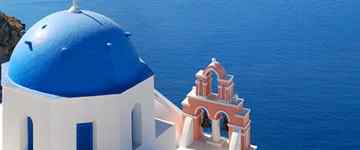A Greek organisation plans to recreate over 100 islands in the Mediterranean in detailed 3D worlds, and fill them with dynamically updating information. The giant project’s goal is to use digital techniques to boost traditional tourist trade.
 The software, named MedIsolae-3D, will capture spatial data of over 100 islands in the territories of Cyprus, Greece, Italy, Spain and Malta, allowing potential tourists to visit the lands virtually. If the user sees something that looks interesting, like hiking trails, beaches, archaeological sites or monuments, they can zoom in for more information.
The software, named MedIsolae-3D, will capture spatial data of over 100 islands in the territories of Cyprus, Greece, Italy, Spain and Malta, allowing potential tourists to visit the lands virtually. If the user sees something that looks interesting, like hiking trails, beaches, archaeological sites or monuments, they can zoom in for more information.
The digital destinations will also be filled with automatically updating information from a massive range of public and private databases, so you can reserve a table at a nice looking restaurant or book a room at a hotel you’ve already visited virtually.
MedIsolae-3D says that the information was gathered from local governments, partners and businesses, and came in a variety of formats and standards, so one of the toughest jobs was making the system turn all the data into a single universal format. Once a converter was designed, though, standardised data can be now be recieved, sent out and updated automatically.
Co-funded by the EU in partnership with a consortium of European businesses, MedIsolae hopes the project will boost tourism on Mediterranean islands, and help improve the economies of smaller holiday destinations.
It’s one of the more ambitious marriages of geographical mapping and data, but software help and pre-built technology like Google Earth and ArcGlobe has made location-specific data a possibility in the last few years.
Technology like Yachting123 uses Google Maps to show off potential boating sites around the world, Transport for London made much of its data public earlier this year, and Google Earth now allows you to plunge to the depths of the sea, search the moon or hunt for life on Mars.
MedIsolae is currently running a pilot with a complete version of Santorini, a 13,000 population island, southeast of Greece. Now it’s just a case of working with more islands and businesses before the project goes live.
Author: Mark Brown | Source: Wired [September 23, 2010]